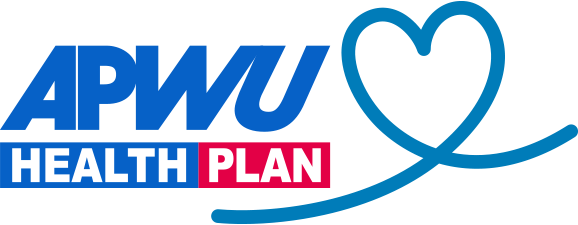Dietary fiber can improve digestive health and bowel function, and eating foods high in fiber can lower your risk for heart disease, diabetes, and stroke. Fiber also helps lower cholesterol and regulate blood sugar levels, and because it keeps you feeling full, a high-fiber diet can help you to lose weight. Despite the many health benefits, most Americans don’t eat enough fiber. Here are some tips for adding more fiber to your diet.
What is fiber?
Fiber is a type of carbohydrate found in fruits and vegetables, legumes, whole grains, nuts and seeds, and other plant-based foods. While the body breaks down most carbs into sugar (called glucose), fiber passes through the body undigested, keeping the digestive system clean and healthy as it promotes regular bowel movements.
Types of fiber
There are two types of fiber, soluble fiber and insoluble fiber, both of which are good for your health.
Soluble fiber, which dissolves in water, slows down the passage of food from the stomach to the intestines and can help control blood sugar levels and reduce cholesterol. Good sources include beans, lentils, apples, berries, citrus fruits, pears, barley, oatmeal, nuts, and chia seeds.
Insoluble fiber does not dissolve in water. Rather, it holds onto water and helps regulate bowel movements by producing softer, bulkier stools. It’s found in carrots, corn, celery, tomatoes, grapes, fruits with edible peels, whole grains, wheat bran, quinoa, brown rice, legumes, leafy greens, almonds, and walnuts.
Meat and dairy products contain no fiber, and during processing almost all of the fiber is removed from packaged foods, such as white bread, white rice, and some pastas.
How much fiber do you need each day?
According to the Academy of Nutrition and Dietetics, the recommended amount of dietary fiber per day is 14 grams for every 1,000 calories you consume—about 25 grams for women and 38 grams for men. For example, if you eat 2,000 calories each day, you could get the fiber you need by consuming:
- 2.5 cups of vegetables
- 2 cups of fruit
- 6 ounces of grains (3 or more ounces from whole grains)
Your exact fiber requirements may vary depending on your health conditions, physical activity levels, and other factors. And, we need less fiber as we age. Women age 70+ need about 21 grams of fiber per day, while men this age need about 30 grams of fiber per day.
A high-fiber diet may interfere with some medications
Fiber may restrict the body’s ability to absorb some prescription medications, so be sure to talk to your doctor or pharmacist about whether it’s safe for you to eat a high-fiber diet with the medications you take.
The health benefits of fiber
Most foods that contain fiber are good sources of healthy vitamins, minerals, and antioxidants. A diet rich in fiber is also associated with many health benefits, including:
Heart health. Fiber is an important part of a heart-healthy diet. Eating a diet high in fiber can improve cholesterol levels by lowering LDL (bad) cholesterol and improving HDL (good) cholesterol. Fiber can also help lower blood pressure and reduce inflammation.
Diabetes. A high-fiber diet can lower your risk for type 2 diabetes. If you have diabetes, eating fiber can slow down the digestion of food and prevent blood sugar levels from rising rapidly. Before you make any changes to your diet, work with your doctor to determine which foods are right for you.
Weight loss. By adding bulk to your diet, fiber can help you get to and maintain a healthy weight. Eating foods high in fiber keeps you feeling full longer so you won’t eat between meals. High-fiber fruits and vegetables are also low in calories and rich sources of healthy nutrients.
Digestive health. Dietary fiber helps regulate bowel movements and prevent both constipation and diarrhea by bulking up stools and making them easier to pass.
Tips for adding fiber to your diet
Consuming too much fiber quickly may cause cramps and bloating, so add fiber to your diet slowly. When eating a high-fiber diet, drink at least eight cups (or 64 ounces) of water or other fluids each day to prevent constipation.
Eat a high-fiber breakfast. Choose cereals that list a whole grain as the first ingredient and contain at least five grams of dietary fiber per serving. Or, add one to two tablespoons of wheat bran, almonds, ground flaxseeds, or chia seeds to your favorite cereal. Try adding fresh blueberries, raspberries, strawberries, or blackberries to cereal or yogurt.
Eat whole fruits instead of drinking juice. An eight-ounce glass of orange juice contains almost no fiber and about 110 calories, while one medium fresh orange contains about three grams of fiber and just 60 calories.
Eat the peel. The edible peels of some fruits, such as apples and pears, are high in fiber.
Add veggies to your meals. Mix chopped spinach or broccoli into pasta sauce or toss diced baby carrots and other vegetables into soups. Add high-fiber beans, peas, lentils, and brown rice to stews and stir-fries.
Replace white bread, pasta, and rice with wholegrain products and brown rice. Choose wholegrain bread for toast and sandwiches. Explore other fiber choices, such as wild rice, barley, whole buckwheat, wholewheat couscous, quinoa, bulgur, wheat germ, and hemp seeds.
Bulk up salads. Add kidney beans, peas, lentils, black beans, nuts, or seeds to a green salad.
Snack on fresh fruits and vegetables. Store cut fruits and veggies in the fridge for quick, healthy snacks you can eat without gaining weight. A handful of nuts is a high-fiber alternative to chips or crackers.
Eat fruit for dessert. Top sliced strawberries with low-fat whipped cream or serve bananas with frozen yogurt for a decadent treat.
Visit the U.S. Department of Agriculture’s Food and Nutrition Information Center (FNIC) and search for fiber for more information on the dietary fiber content of food.
Do you need to take a fiber supplement?
While fiber supplements are not intended to replace high-fiber foods, if you find it difficult to get enough fiber from your diet, ask your doctor whether a fiber supplement is right for you. Be sure to drink at least eight ounces of liquid with your supplement because taking some fiber supplements without enough liquid may cause you to choke of become constipated.
Many nutritious foods naturally contain fiber. If you eat a balanced diet, you shouldn’t need to take a fiber supplement.
Additional source
Cleveland Clinic, Improving Your Health With Fiber







